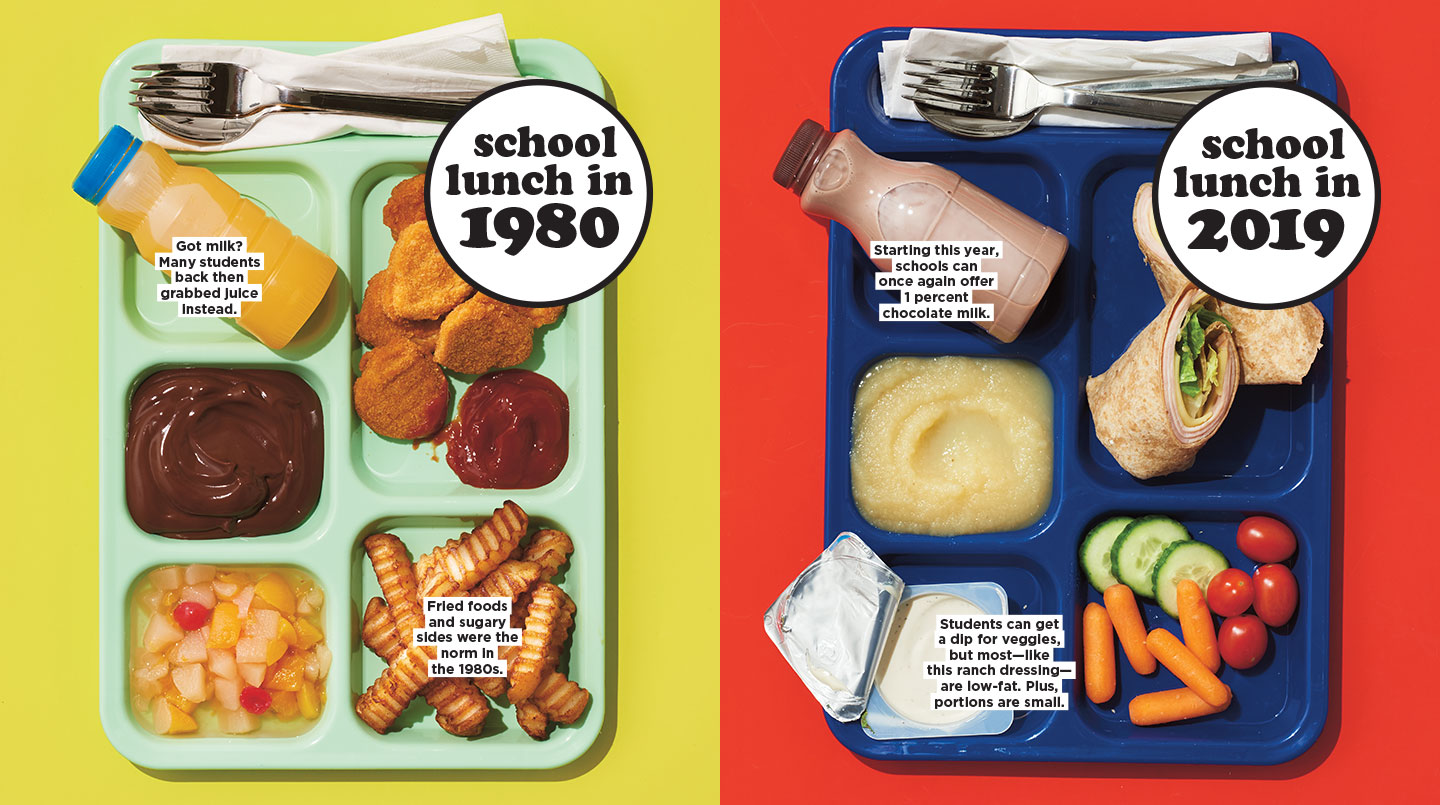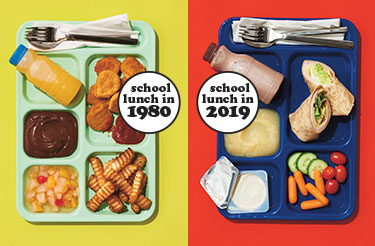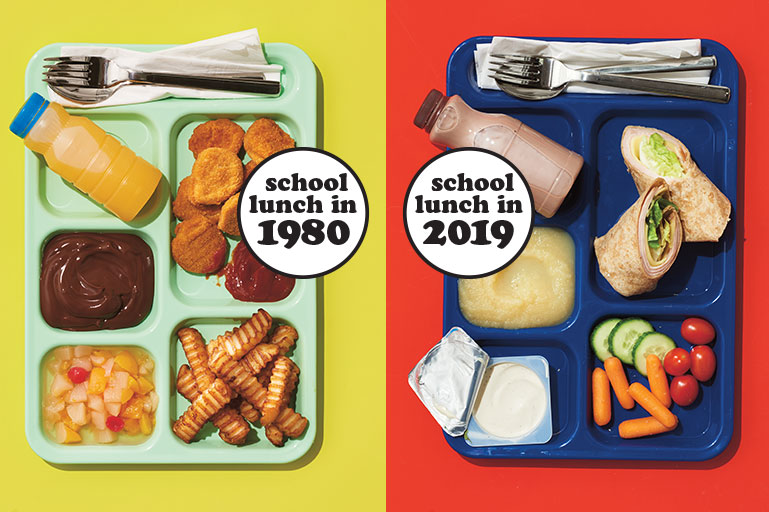Turkey wrap or chicken tenders? Baby carrots or salad? You probably spend just moments selecting your lunch each day at school. But believe it or not, each option has already been given hundreds of hours of consideration. Everyone from your cafeteria staff to the U.S. Congress has analyzed and debated even the smallest details of school lunch menus—right down to that packet of ketchup you just squeezed onto your cheeseburger.
Why? The federal government has been in charge of public school lunches for more than 70 years, making sure American kids get enough to eat at school. It sets nutritional standards for exactly what and how much a school can dish out per meal, including limits on calories, fat, and sodium.
Turkey wrap or chicken tenders? Baby carrots or salad? You probably spend just moments choosing your lunch each day at school. But believe it or not, each option has already been given a lot of thought. Everyone from your cafeteria staff to the U.S. Congress has analyzed and debated even the smallest details of school lunch menus. That includes that packet of ketchup you just squeezed onto your cheeseburger.
Why? The federal government has been in charge of public school lunches for more than 70 years. It makes sure American kids get enough to eat at school. It sets nutritional standards for exactly what and how much a school can serve per meal. This includes limits on calories, fat, and sodium.





